| |
|
|
 |
|
 |
| |
Important:
Program Book and Conference Guide
[07.05.2015]
The paper submission system open till:
February 6, 2015
Author’s notification:
March 2,
March 9, 2015
Registration:
April 3,
April 17, 2015
Final upload due:
April 3,
April 17, 2015
|
|
 |
|
 |
| |
General contacts:
Ansis Avotins /
Aija Laicane
Phone:
+371 6 708 9919
GSM:
+371 2615 2357
Fax:
+371 6 708 9941
Email:
powereng2015(at)rtu.lv
|
|
|
| |
|
|
 |
|
 |
| |
Keynote Speakers
- Maximizing Renewable Energy Sources Penetration in European Islands Prof. João P. S. Catalão (University of Beira Interior, Covilha, Portugal)
- Next-Generation Smart Grids: Completely Autonomous Power Systems (CAPS) Prof. Qing-Chang Zhong (University of Sheffield, Sheffield, United Kingdom)
- Introduction to the SET-Plan and the Needed European Research on Smart Grids Dr. Luciano Martini (RSE, National Research Centre, Milan, Italy)
- Big Data: What, why, when and how Dr. Mladen Kezunovic (Texas A&M University, Texas, USA)
- High-Efficiency Silicon Carbide Power Electronics: Today and Tomorrow Prof. Hans-Peter Nee (Royal Institute of Technology, Stockholm, Sweden)
- Practical use of wide bandgap semiconductors in power module implementations Dr. Lee Empringham (University of Nottingham, Nottingham, United Kingdom)
- Research Challenges and Future Perspectives of Solid-State Transformer Technology Prof. Johann W. Kolar (Swiss Federal Institute of Technology, Zurich, Switzerland)
1. Maximizing Renewable Energy Sources Penetration in European Islands

|
|
Prof. João P. S. Catalão (University of Beira Interior, Covilha, Portugal) [Biography..]
Received the M.Sc. degree from the Instituto Superior Técnico (IST), Lisbon, Portugal, in 2003, and the Ph.D. degree and Habilitation for Full Professor ("Agregação") from the University of Beira Interior (UBI), Covilha, Portugal, in 2007 and 2013, respectively.
Currently, he is a Professor at UBI, Director of the Sustainable Energy Systems Lab and Researcher at INESC-ID. He is a Senior Member of IEEE. He is the Primary Coordinator of the EU-funded FP7 project SiNGULAR ("Smart and Sustainable Insular Electricity Grids Under Large-Scale Renewable Integration"), a 5.2 million euro project involving 11 industry partners. He has authored or coauthored more than 300 publications, including 97 journal papers, 183 conference proceedings papers and 20 book chapters, with an h-index of 22 (according to Google Scholar), having supervised more than 25 post-docs, Ph.D. and M.Sc. students. He is the Editor of the book entitled Electric Power Systems: Advanced Forecasting Techniques and Optimal Generation Scheduling (Boca Raton, FL, USA: CRC Press, 2012), translated into Chinese in January 2014. Currently, he is editing another book entitled Smart and Sustainable Power Systems: Operations, Planning and Economics of Insular Electricity Grids (Boca Raton, FL, USA: CRC Press, 2015). His research interests include power system operations and planning, hydro and thermal scheduling, wind and price forecasting, distributed renewable generation, demand response and smart grids.
Prof. Catalão is an Editor of the IEEE TRANSACTIONS ON SMART GRID, an Editor of the IEEE TRANSACTIONS ON SUSTAINABLE ENERGY, and an Associate Editor of the IET Renewable Power Generation. He was the Guest Editor-in-Chief for the Special Section on "Real-Time Demand Response" of the IEEE TRANSACTIONS ON SMART GRID, published in December 2012, and he is currently the Guest Editor-in-Chief for the Special Section on "Reserve and Flexibility for Handling Variability and Uncertainty of Renewable Generation" of the IEEE TRANSACTIONS ON SUSTAINABLE ENERGY. He is the recipient of the 2011 Scientific Merit Award UBI-FE/Santander Universities and the 2012 Scientific Award UTL/Santander Totta.
Abstract:
The usually small and weak electrical grids present obstacles to maximum Renewable Energy Sources (RES) penetration in island regions, associated with the technical limitations and difficulties to manage power fluctuations.
The need to have back-up conventional power systems on standby for when wind is dropping and stops blowing or when the sun does not shine, even simply due to clouds passing overhead, is an important cost that has to be supported by local utilities.
Besides, high percentage penetration of intermittent RES generated electricity induces stability problems in the islands electrical systems. Indeed, rapid reductions in the power output from RES must be managed with appropriate control or energy storage systems to maintain constant power output.
In this context, enhanced forecasting, operations and planning tools can contribute to increase RES penetration. The proficiency of such tools is reinforced if they are combined with uncertainty and risk management methods.
This Keynote Speech addresses the effects of large-scale integration of RES on the optimal operation and planning of insular power systems, proposing efficient measures, solutions and tools towards the development of a sustainable and smart grid, all under the EU-funded FP7 project SiNGULAR
(a 5.2 million euro project involving 11 industry partners).
The goal is the generation of effective solutions and information so that the integration of insular and highly variable energy resources is maximized. The optimal forecasting, operation and planning tools have been applied in different insular electrical grids in five countries across Europe for extensive demonstration, allowing the development of generalized guides of procedures and grid codes.
|
2. Next-Generation Smart Grids: Completely Autonomous Power Systems (CAPS)
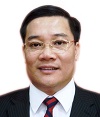
|
|
Prof. Qing-Chang Zhong (University of Sheffield, Sheffield, United Kingdom) [Biography..]
Qing-Chang Zhong is the Chair Professor in Control and Systems Engineering at the Department of Automatic Control and Systems Engineering, The University of Sheffield, UK, and a Specialist recognised by the State Grid Corporation of China (SGCC). He is a Distinguished Lecturer of IEEE Power Electronics Society. He obtained his PhD degree in control theory and applications in 2000 from Shanghai Jiao-Tong University and his PhD degree in control and power engineering in 2004 from Imperial College London (awarded the Best Doctoral Thesis Prize). In 2012-2013, he spent a six-month sabbatical at the Cymer Center for Control Systems and Dynamics (CCSD), University of California, San Diego, USA and an eight-month sabbatical at the Center for Power Electronics Systems (CPES), Virginia Tech, Blacksburg, USA and visited more than 20 US research centers, national labs and major companies. He (co-)authored three research monographs, including Control of Power Inverters in Renewable Energy and Smart Grid Integration (Wiley-IEEE Press, 2013), and a fourth, Completely Autonomous Power Systems (CAPS): Next Generation Smart Grids, is scheduled for publication by Wiley-IEEE Press in 2015. He, jointly with G. Weiss, invented the synchronverter technology to make inverters behave like synchronous generators, which was awarded Highly Commended at the 2009 IET Innovation Awards. He is a Fellow of the Institution of Engineering and Technology (IET), a Senior Member of IEEE, the Vice-Chair of IFAC TC of Power and Energy Systems and was a Senior Research Fellow of the Royal Academy of Engineering/Leverhulme Trust, UK (2009–2010). He serves as an Associate Editor for IEEE Transactions on Power Electronics, IEEE Transactions on Control Systems Technology, IEEE Access, European Journal of Control and the Conference Editorial Board of the IEEE Control Systems Society. His research focuses on power electronics, advanced control theory and the integration of both, together with applications in renewable energy, smart grid integration, electric drives and electric vehicles, aircraft power systems, high-speed trains etc.
Abstract:
Power systems are going through a paradigm change from centralised generation, to distributed generation, and further on to smart grids. A huge number of renewable energy sources, electric vehicles, and storage systems etc. are being connected to power systems. Moreover, various loads are being required to take part in demand responses and to improve energy efficiency. These make it impossible to control and operate power systems in the conventional way, simply because of the huge number of players in the system. In this lecture, an architecture and its associated distributed control strategy, which are based on the inherent synchronisation mechanism of conventional synchronous generators, are presented for next-generation smart grids so that the majority of the players, including all conventional power plants, new add-ons of suppliers and most loads, will be able to synchronise with each other to achieve autonomous operation and maintain system stability, without the need of a dedicated communication network. The function of communication is achieved through control.
|
3. Introduction to the SET-Plan and the Needed European Research on Smart Grids
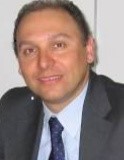
|
|
Dr. Luciano Martini (RSE, National Research Centre, Milan, Italy)[Biography..]
Dr. Luciano Martini works for the Transmission & Distribution Technologies Department of RSE Spa, a National Research Centre located in Milan, Italy.
RSE is very active in the electricity and energy sector, with strong emphasis on experimental pilot applications with a comprehensive system approach based on multi-disciplinary competences. RSE R&D activity is embedded in national, EU and industry co-operations focusing on sustainable innovation of the electrical system, exploitation of renewable energy and the application of DG concepts, as well as the study, testing and experimentation of innovative technologies.
Martini has a 25-year long experience on R&D activity dealing with innovative materials, renewable energies, superconductivity, and smart grids. At present, Martini is head of the “Innovative Network Technologies” Research Group whose R&D includes plug-in electric vehicles, applied superconductivity, and pilot applications of smart grids.
Martini is the co-coordinator of the Joint Programme (JP) on Smart Grids of the European Energy Research Alliance (EERA) that was officially launched in June 2010. To date 13 research organisations from 10 countries are participating in the JP, with a commitment of more than 640 person-months per year, and others are expected to join in 2011.
Martini is vice-chairman within the Executive Committee of the International Energy Agency (IEA) Implementing Agreement for assessing the impacts of High Temperature Superconductivity on the electric power sector and member of several CIGRE and IEC international working groups. Martini has been recruited by organizations as EC and US DOE as independent expert to peer review publicly funded applied R&D projects.
Abstract:
The Strategic Energy Technology plan (SET-Plan) aims to help achieving Europe 2020 and 2050 targets and visions on greenhouse gas emissions, renewables and energy efficiency by increasing research, reducing costs and improving performance of existing technologies, encouraging their commercial implementation, and, in the longer term, supporting the deployment of more efficient new low carbon technologies.
In this context, the electricity grid can play an important role and therefore, a suitable portfolio of innovative technologies needs to be researched, developed and deployed in order to preparing the European electricity networks to enable the ambitious agenda adopted by the European Member States.
Apart from introducing some of the most relevant initiatives for the achievement of the SET-Plan ambitious goals, namely the European Industrial Initiatives (EII), the European Technology Platforms (ETP), and the European Energy Research Alliance (EERA), this keynote speech will present goals and activity of the EERA Joint Research Programme (JP) on Smart Grids (SG).
By means of an extended cross-disciplinary cooperation involving, at present, 36 research organizations from 17 different European countries with different and complementary expertise and facilities, the EERA JP SG aims at addressing in a medium- to long-term research perspective, the most critical areas directly relating to the effective acceleration of smart grid development and deployment.
This represents a new and more effective way of working at European level in order to tackle with the complexity of the research smart grid challenges.
The research activity of the JP SG, covering active distribution network, integrating distributed generation from renewable energy sources, load management issues, electrical storage systems, and transmission networks, is hence reported and discussed.
|
4. Big Data: What, why, when and how
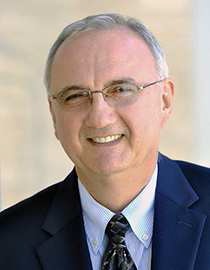
|
|
Dr. Mladen Kezunovic (Texas A&M University, Texas, USA) [Biography..]
Dr. Mladen Kezunovic is a Eugene E. Webb endowed Professor at Texas A&M University where he was employed since 1986. Dr. Kezunovic serves several leading roles at the university: Director, Smart Grid Center; Site Director, NSF Power Systems Engineering Research Center (PSerc), and Director, Power Systems Control and Protection Lab. He also acts as the Principal Consultant, as well as
President and CEO of XpertPowerTM Associates, which has been providing consulting services for utility industry for over 20 years. He worked for Westinghouse Electric in the U.S.A. as a Systems Engineer on developing the first
all-digital substation design during 1979-1980 and for Energoinvest Company in Europe as the Technical Lead for substation automation development during 1980-86. He was a consultant for EdF’s Research Centre in Clamart, France in 1999-2000 and was a Visiting Professor at the University of Hong Kong in fall of 2009. He also acted as a consultant to over 50 utilities and vendors worldwide, and served three terms (2009-2013) as a Director on the Board of Directors of the Smart Grid Interoperability Panel (SGIP) representing research organizations and universities.
Dr. Kezunovic was a Principal Investigator on over 100 R&D projects, published more than 450 papers and gave over 100 invited lectures, short courses and seminars around the world. He is an IEEE Fellow and Distinguished Speaker, CIGRE Fellow, and registered Professional Engineer in Texas. He is the recipient of the Inaugural 2011 IEEE Educational Activities Board Standards Education Award “for educating students and engineers about the importance and benefits of interoperability standards” and CIGRE Technical Committee Award for "remarkable technical contribution to the study committee B5, protection and automation" in 2013..
Abstract:
After 130 years of the development, power systems are at cross roads. The originally envisioned concept of centralized bulk generation, highly available transmission system, radial distribution system and passive load does not seem to be sustainable. The highly variable renewable sources, heavily utilized transmission, distribution with bidirectional flows and loads/microgrids that can act as a resource are recognizable trends for the future. This talk focuses on the role of Big Data in managing and controlling future power system, which will be characterized with “explosion” of data and unprecedented computational and communication capabilities to automatically extract the knowledge.
This talk will reflect on unique impacts from different data sources that range from field measurements obtained through substation/feeder intelligent electronic devices such as Digital Protective Relays (DPRs), Digital Fault Recorders (DFRs), Phasor Measurement Units (PMUs), etc. to other data sets obtained from specialized commercial and/or government/state databases: weather data of different types, lightning detection data, seismic data, fire detection data, etc. Due to the massive amount of such data (terabytes) available in real time and through historical records, processing and management of such data requires revisiting data correlation and feature extraction strategies already developed in the Big Data industries such as banking, insurance and health care. This talk will focus on the differences between the Big Data properties in the power industry where the temporal and spatial properties, as well as correlation to the power system and component models are necessary for an efficient data uses.
|
5. High-Efficiency Silicon Carbide Power Electronics: Today and Tomorrow
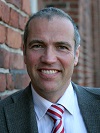
|
|
Prof. Hans-Peter Nee (Royal Institute of Technology, Stockholm, Sweden) [Biography..]
Hans-Peter Nee was born in 1963 in Västerås, Sweden. He received the M.Sc., Licentiate, and Ph.D degrees in electrical engineering from the Royal Institute of Technology, Stockholm, Sweden, in 1987, 1992, and 1996, respectively. In 1999 he was appointed Professor of Power Electronics in the Department of Electrical Engineering. His interests are power electronic converters, semiconductor components, and control aspects of utility applications, like FACTS, HVDC, wind power converter systems, and variable-speed drives. At present, the two main focus areas are multilevel converters for high-power applications and high-efficiency SiC power electronics for various applications.
Prof. Nee has served in the board of the IEEE Sweden Section for many years and was the chairman of the board during 2002 and 2003. He is also a member of EPE and serves in the Executive Council and in the International Steering Committee. He is also an associate editor of IEEE Transactions on Power Electronics, and was the Guest Editor-in-chief for the special issue on “wide bandgap power devices and their applications” in published in the same journal in May 2014.
Abstract:
With the silicon carbide (SiC) power devices available today it has been shown that converter efficiencies exceeding 99.5 percent are possible. The main ideas behind such designs are discussed along with examples of converters. Module parasitics are problematic, and often parallel-connection of discrete devices provides superior performance compared to modules. New improved module designs with lower parasitic inductances are necessary for SiC power devices. With existing technology, however, products in different application areas can be developed. For this purpose, the reliability of SiC devices, packages, and systems must be investigated. An attempt to foresee new devices, modules and their applications is also made.
|
6. Practical use of wide bandgap semiconductors in power module implementations
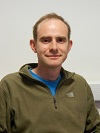
|
|
Dr. Lee Empringham (University of Nottingham, Nottingham, United Kingdom) [Biography..]
Dr. Lee Empringham is a Principal Research Fellow within the Power Electronics Machines and Control Group, part of the Electrical Systems and Optics research division within the Faculty of Engineering at the University of Nottingham.
He received a B.Eng (hons) degree in Electrical and Electronic Engineering from the University of Nottingham, UK in 1996. He then joined the Power Electronics, Machines and Control Group at the University of Nottingham, UK to work on matrix converter commutation techniques. He received his PhD degree in November 2000. Since then he has been employed by the group as a Research Fellow to support different ongoing power converter projects and was promoted to Senior Research Fellow in 2007 and Principal Research Fellow in 2011. His present research interests include Direct AC-AC and Direct AC-DC power conversion, Variable Speed AC Motor Drives using different circuit topologies and Micro-grid interface converters to improve grid resilience and robustness and the use of wide bandgap semiconductors for high power converters. His research efforts have led to the creation of practical industrial prototype power converters ranging from 2kW to 200kW for aerospace, marine, automotive and industrial applications for companies including, Boeing, Airbus, Infineon and GE.
Abstract:
As the desire for increased power density and reduced losses pushes the switching speed of modern power devices to ever increasing levels, Low level interactions with parasitic elements within the power module become increasingly more important together with increased potential for Electro-magnetic Interference. The standard ‘add more devices’ approach to building high current power modules restricts the potential gains which are promised from modern wide bandgap power devices in that, increasing power module sizes increases parasitic component values and the potential for EMI emissions.
This speech will highlight the problems with present power module approaches with respect to the use of high speed devices and will outline a modular approach to the design and construction of high power converters which also addresses the increasingly important EMI issues of modern power converters.
|
7. Research Challenges and Future Perspectives of Solid-State Transformer Technology
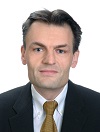
|
|
Prof. Johann W. Kolar (Swiss Federal Institute of Technology, Zurich, Switzerland) [Biography..]
Johann W. Kolar is a Fellow of the IEEE and received his M.Sc. and Ph.D. degree (summa cum laude) from the University of Technology Vienna, Austria. He is currently a Full Professor and the Head of the Power Electronic Systems Laboratory at the Swiss Federal Institute of Technology (ETH) Zurich. Dr. Kolar has proposed numerous novel PWM converter topologies, and modulation and control concepts, e.g., the Vienna Rectifier, the Swiss Rectifier, and the Three-Phase AC-AC Sparse Matrix Converter and has published over 600 scientific papers in international journals and conference proceedings and has filed more than 100 patents. He received 10 IEEE Transactions Prize Paper Awards, 10 IEEE Conference Prize Paper Awards, the SEMIKRON Innovation Award 2014, the Middlebrook Achievement Award of the IEEE Power Electronics Society, and the ETH Zurich Golden Owl Award 2011 for Excellence in Teaching. The focus of his current research is on ultra-compact and ultra-efficient converter topologies employing latest power semiconductor technology (SiC and GaN), Solid-State Transformers, Power Supplies on Chip, and ultra-high speed and bearingless motors.
Abstract:
Research Challenges and Future Perspectives of Solid-State Transformer Technology
|
|
|
 |
|
 |
|
|











